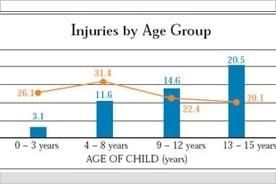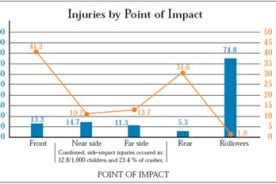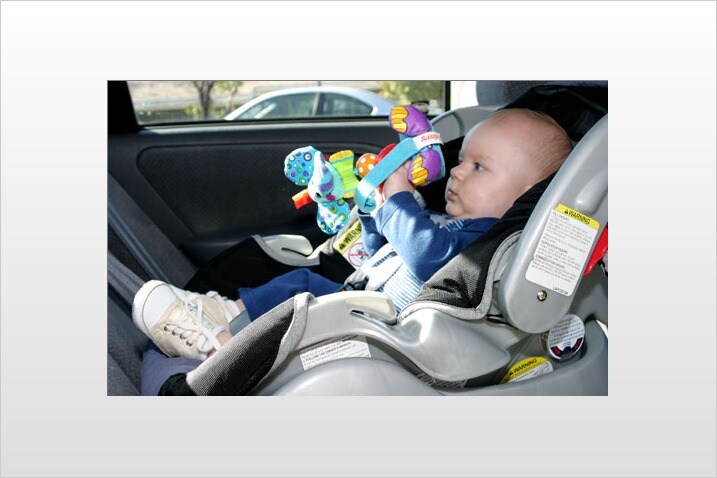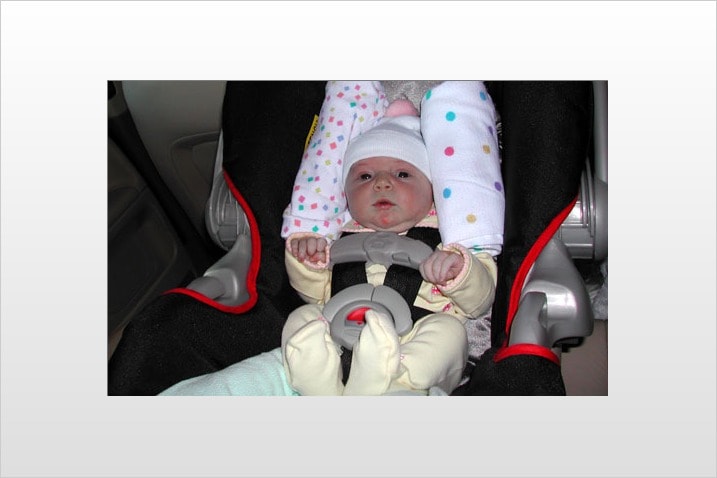Are the federal tests good enough?
Regardless of the results of the Consumers Union tests, the group raised awareness that the government tests car seats at a lower speed than it tests vehicles. To meet federal safety standards, a car seat is strapped to the center of a bench seat, which is then projected rearward to simulate a frontal crash of 30 mph. The test is conducted twice: one with the seat secured by a lap belt, and again using LATCH. And unlike vehicle crash tests, which receive a rating of one to five stars, car seats receive only a pass or fail grade. The government does not yet test car seats for side-impact crash performance.
In its test report CU stated, "Our new tests are tougher than the federal car-seat standard because a significant performance gap exists between vehicles and the car seats they carry. "NHTSA, however, said this isn't true. "The 30-mph test that car seats are subjected to is more severe than the 35-mph frontal impact vehicle test because of the acceleration rate," said NHTSA Spokesperson Rae Tyson.
Car seats are not currently tested for performance in a side-impact crash test. In 2002, however, NHTSA analyzed how two car seats performed, one convertible seat and one rear-facing infant seat, in side-impact tests of eight vehicles, as an experiment to see if side-impact data could be successfully obtained. The results were inconclusive, in large part because the child-size test dummies that currently exist are designed to measure injuries caused by frontal impacts. (See "Meet the Family of Crash-Test Dummies.") At some point, NHTSA does expect to have a side-impact test for child safety seats, but not until crash-test-dummy technology will support it.
Are infants really at risk?
While Consumer Reports' initial study caused significant concern, it's important to understand the real-world risks to infants. Children riding in rear-facing infant seats have the lowest risk of injury among all children in vehicle crashes, according to Partners for Child Passenger Safety (PCPS), which conducts the world's largest study of children involved in real-world crashes. According to the group's study of crashes from 2005, just 3.1 percent of infants involved in crashes were injured. Infants' low risk is due to several factors, including where they sit in the vehicle and the way they are restrained.

(Courtesy of PCPS)
Further, side-impact injuries occur less frequently than other types of injuries.

(Courtesy of PCPS)
According to PCPS's 2005 study, less than 1 percent of the crashes reported to the group involved infants in rear-facing seats in side-impact crashes. And of those side-impact crashes, the risk of injury was less than half of 1 percent.
"It's important to place findings such as those reported initially in Consumer Reports in perspective," said Kristy Arbogast, direct of field engineering at PCPS. "Children riding in the correct restraint for their age and size are far safer than if they were not restrained at all, or in a restraint inappropriate for their age or size."



